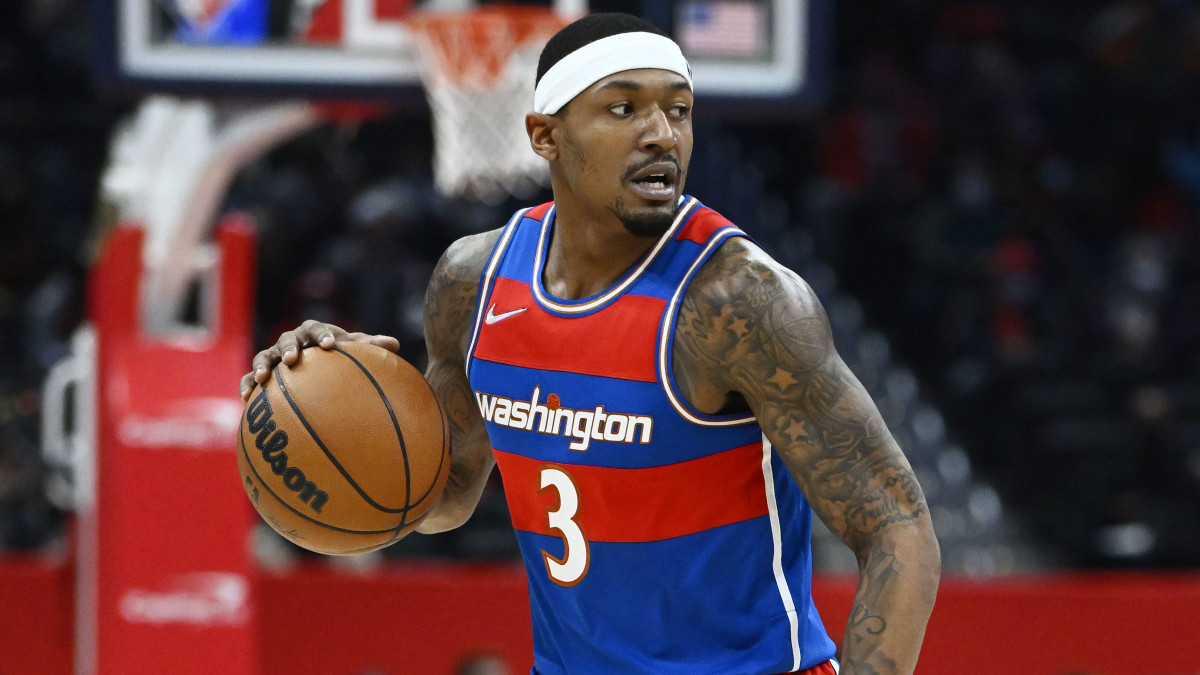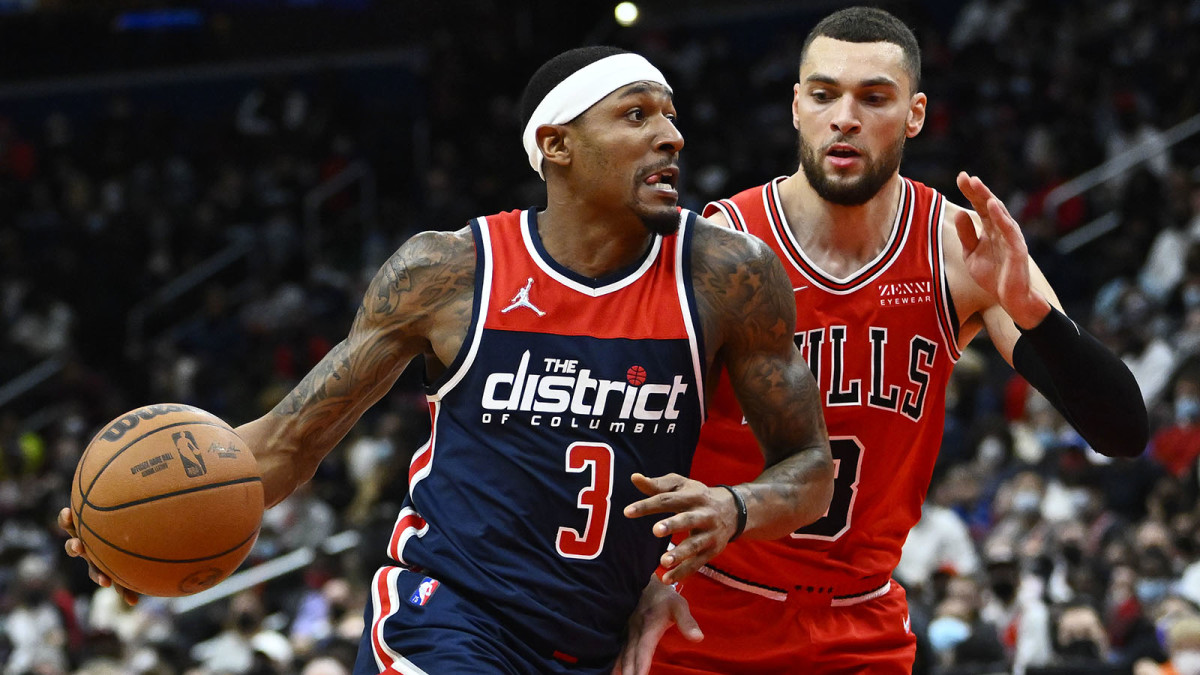The Wizards Dropped the Ball on Bradley Beal’s Max Contract
On Wednesday afternoon, ESPN cap analyst Bobby Marks tweeted one of the more peculiar, inane and utterly impressive bits of contract minutiae revealed since the NBA’s offseason began: Wizards guard Bradley Beal, who had just been given $251 million reasons to stay with the Wizards, has a no-trade clause in his new deal.
To get one, you need eight seasons under your belt and four straight years with the team offering it. Per Marks, here is every player who’s ever had a no-trade clause in his contract: LeBron James (during his second stint with the Cavaliers), Kevin Garnett, Carmelo Anthony, Dirk Nowitzki, Kobe Bryant, Dwyane Wade, Tim Duncan, David Robinson and John Stockton.
Beal qualified. The Wizards acquiesced.
Before the knives come out detailing why this is so ridiculous, it needs to be said that very few players can say they stuck around with the same team long enough to even be eligible. And a few who don’t have one are simply a victim of unfortunate timing. (Damian Lillard, for example, might have a no-trade clause if, instead of signing a four-year max extension in 2019, he waited until after the season—which was his eighth—to sign a new max with the Blazers.)
To highlight how rare they truly are: Stephen Curry could’ve had one when he signed his five-year max contract in 2017. At the time he was 29 years old, durable, transcendent, a two-time MVP, four-time All-Star and had just led his team to three straight Finals appearances. The Warriors still did not grant him a no-trade clause; Curry also didn’t get a player option in the fifth year, which Beal and most stars have. (Beal’s is worth about $60 million in 2027.)

Meanwhile, Beal is coming off a season that was cut short by wrist surgery in February. His Wizards finished with eight more losses than the 10-seed Hornets and missed the playoffs for the fifth time in Beal’s 10 seasons. He also just turned 29 years old and has been an All-Star three times. In 2021 he cracked his first All-NBA team. He’s a very good offense unto himself, someone who can thrive both with the ball in his hands and away from it, darting off pindowns, curling around dribble hand-offs, conducting pick and rolls and spacing the floor.
When healthy (which, to his credit, Beal usually is) you can only count the number of scorers who attack with more grace and breadth on one hand. He gets to the line, finishes at the rim and is more comfortable in the mid-range than his own living room. The handle is disgusting. The volcanic malleability is what makes Beal so attractive around the league, and why the Wizards felt they had to keep him happy long after a breakup started to make sense.
There’s now several years worth of evidence that suggests this team can’t build a winner around him. The franchise let down its franchise player but the franchise player refused to walk away. So, instead of hitting free agency when his first five-year max deal expired, back in 2019 Beal signed a two-year, $72 million extension, as John Wall battled injuries on his own catastrophic mega contract. Then Russell Westbrook came in as a temporary band-aid that solved zero big picture dilemmas. Then Westbrook was traded for a pack of role players.
At this stage in his career, still without a proper support system as the face of a perpetually flailing organization that’s never really stopped splashing its arms, Beal’s five-year max is this anticlimactic mark of hopelessness, an appendix both sides were resigned to accept.

Now, on top of that, he’s the only active NBA player whose front office needs permission to pick up the phone and say his name, which begs a couple questions and begets some fair criticism. What leverage did Beal actually have to get such a cap-crippling amendment inserted into his deal? Was he really going to walk away from a $251 million pact to take $64.9 million less from somebody else? (A maximum contract anywhere else would’ve been $186.1 million over four years.) What does the Wizards’ path to the playoffs look like? How can a respectable postseason run—for someone who recently said, “I want to be playing in late June”—happen anytime soon?
Beal is one of the oldest players on a roster that has no blue-chip prospect on the rise. Kristaps Porzingis–who the Wizards acquired for Spencer Dinwiddie and Davis Bertans—is probably their second-best player. They won’t have meaningful cap space for another couple years—when Beal may start looking for greener grass—and can’t trade a first-round pick until 2028.
Washington would’ve been wise to call his bluff, as this agreement was already prohibitive enough not to warrant a perk that’s hardly ever given out for completely understandable reasons. The most pertinent being—apologies for yelling—THE WIZARDS ARE BAD AND VERY LIKELY TO TRADE BRADLEY BEAL SOMEDAY! And when that day comes they are all but guaranteed not to get the best package possible because Beal can nix whatever destination he doesn’t like, severely damaging Washington’s foothold in any negotiation.
In other words, the Wizards just made someone who has never reached the conference finals and last won a playoff series in 2017 the most powerful player in the NBA. Instead of trading him for a haul and setting out on a genuine rebuild, they buckled under the weight of their own futile obsession with the fringes of relevance someone that talented ostensibly opens the door to. The writing was on the wall several years ago. Everyone could read it except Washington’s owner Ted Leonsis, who’s long equated a rebuild with indignity.
Now, some might call Beal’s contract the worst in the league, but that characterization feels too general (and insulting about a guy who averaged over 30 points per game two years in a row). Instead, few are more destabilizing, because the team that offered it was too narrow minded to detect the other hands they had to play.
More NBA Coverage:
